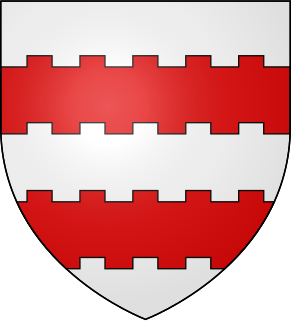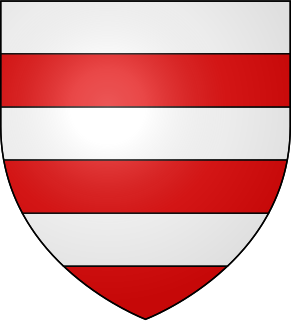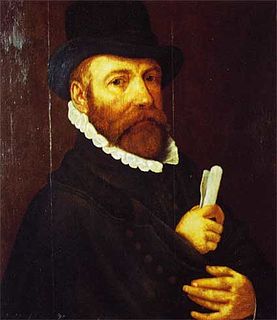| Walter II, Lord of Egmond | |
|---|---|
| Born | c. 1283 Egmond aan den Hoef |
| Died | 3 September 1321 |
| Buried | Egmond Abbey |
| Noble family | House of Egmond |
| Father | Gerald II of Egmond (c. 1255 -1300) |
| Mother | Elisabeth van Strijen (†1297) |
Walter II, Lord of Egmond (in Dutch : Wouter II van Egmond) (c. 1283 – 3 September 1321) was Lord of Egmond.

Dutch(

Egmond is a former municipality in the north-western Netherlands, in the province of North Holland. In 2001, it was merged with the municipalities of Schoorl and Bergen to form the municipality of Bergen. The three main villages in the former municipality are Egmond aan den Hoef, Egmond aan Zee and Egmond-Binnen. The place gave its name to the House of Egmond, who became the powerful protectors of Egmond Abbey, founded in the 9th-century in Egmond-Binnen, and who built their residence (hoeve/hoef) in Egmond aan den Hoef.

He was the second surviving son of Gerald/Gerard II of Egmond, who had died in 1300 before his own father William II, Lord of Egmond. Walter became Lord of Egmond when his older brother, William III, died without offspring on 2 July 1312. Under his rule the relationships of the house with the Egmond Abbey were normalized. [1] In 1315 he participated with 60 of his people in a military expedition to Flanders. Before 1310 he married Beatrijs van der Doirtoghe/Doortoge (c. 1290 -11 September 1323) from Naaldwijk. [2] with whom he had five surviving children:
William II, Lord of Egmond or Willem II, heer van Egmond was a ruling Lord of Egmond.

Egmond Abbey or St. Adalbert's Abbey is a Benedictine monastery of the Congregation of the Annunciation between Egmond aan den Hoef and Bakkum in Egmond-Binnen in the municipality of Bergen in the Dutch province of North Holland. Founded in 920-925 and destroyed in the Reformation, it was re-founded in 1935 as the present Sint-Adelbertabdij, in the Diocese of Haarlem.

Flanders is the Dutch-speaking northern portion of Belgium and one of the communities, regions and language areas of Belgium. However, there are several overlapping definitions, including ones related to culture, language, politics and history, and sometimes involving neighbouring countries. The demonym associated with Flanders is Fleming, while the corresponding adjective is Flemish. The official capital of Flanders is Brussels, although the Brussels Capital Region has an independent regional government, and the government of Flanders only oversees the community aspects of Flanders life in Brussels such as (Flemish) culture and education.
- John I, Lord of Egmond (c. 1310 – 1369)
- Walter/Wouter (* c. 1314)
- Yda (c. 1317 – 1366)
- Sofia (* c. 1319)
- Gerald/Gerrit (c. 1320 – c. 1397)

John I, Lord of Egmond was Lord of Egmond, Lord of IJsselstein, bailiff of Kennemerland (1353-1354) and stadtholder of Holland.









